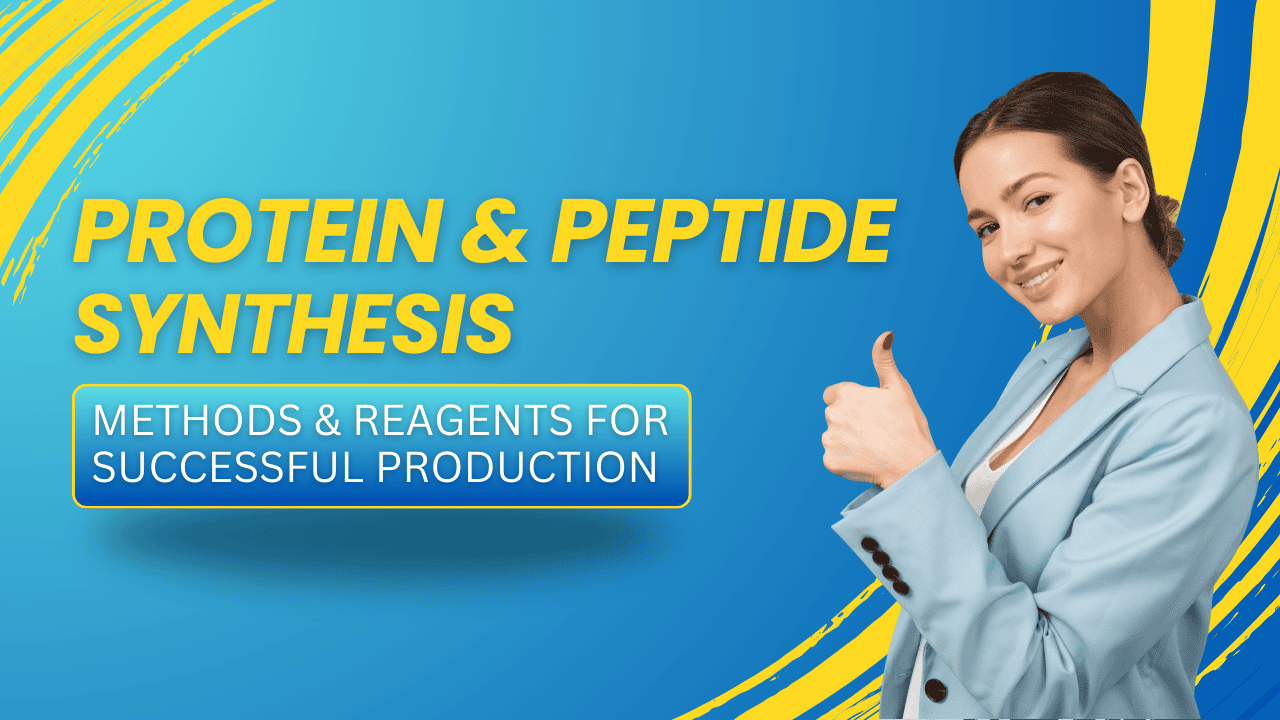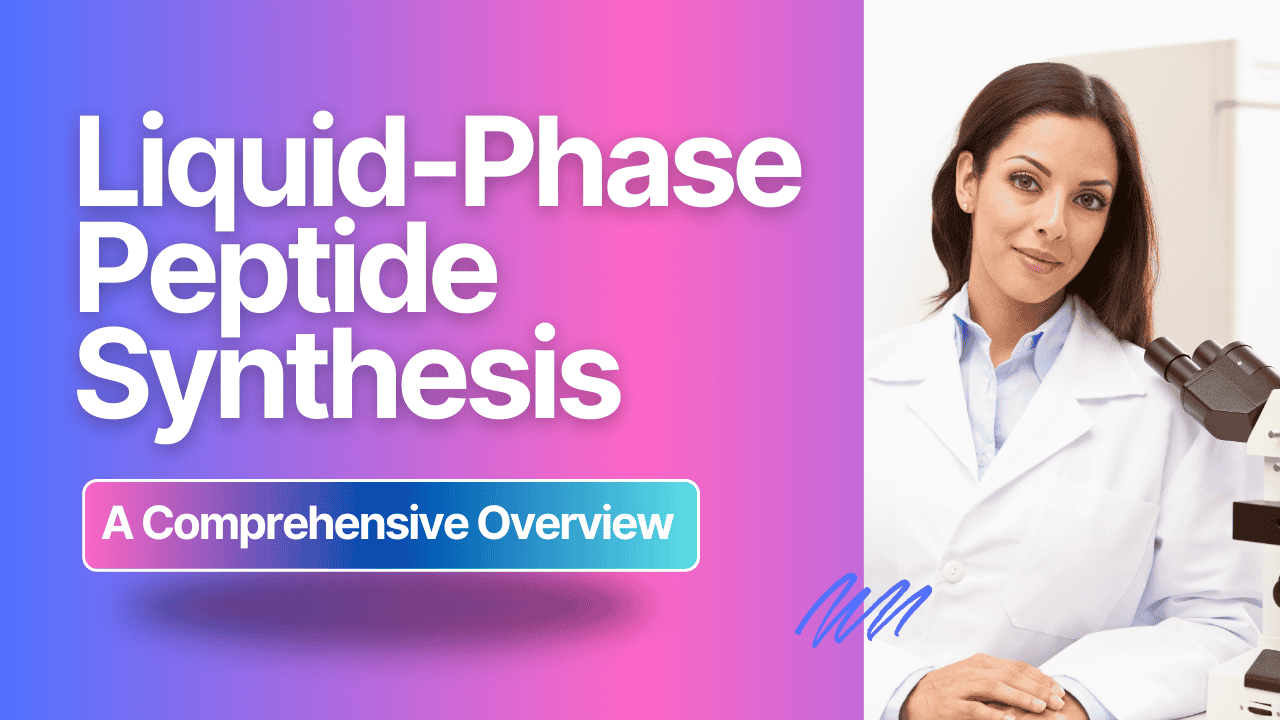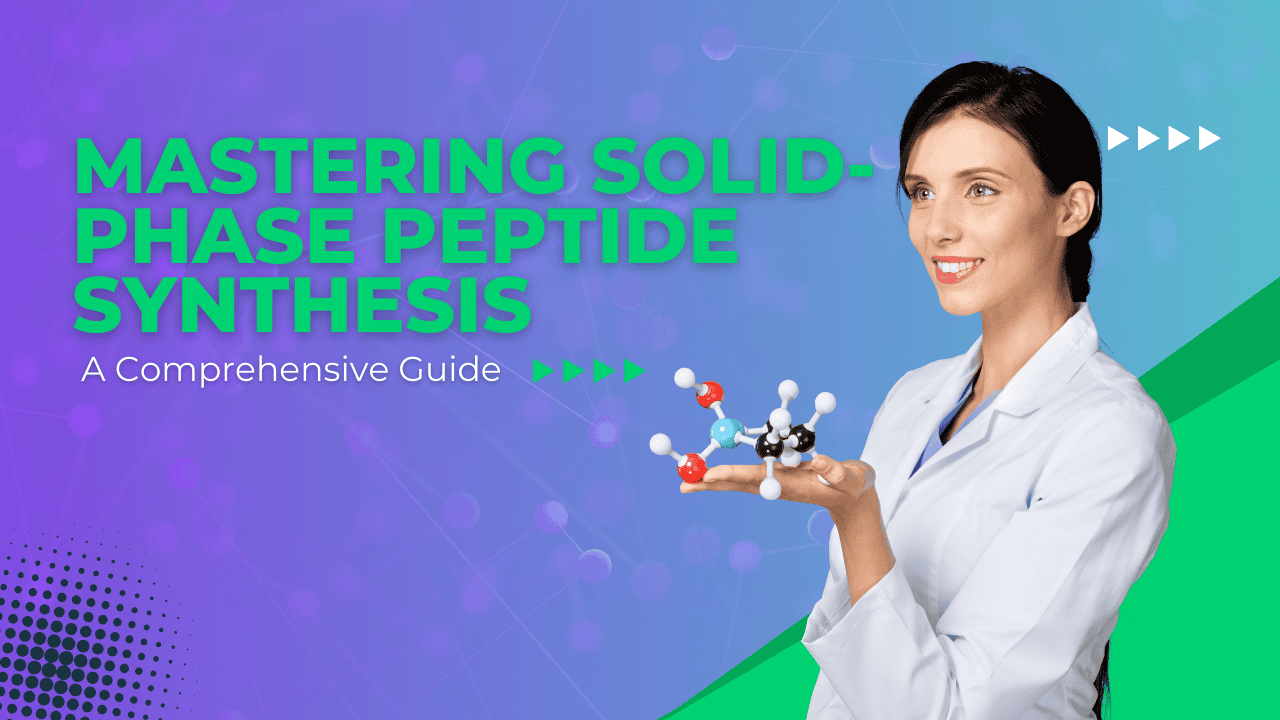

In the world of cutting-edge biotechnology, hybrid peptide synthesis is a beacon of innovation that promises to maximize both purity and efficiency in peptide production.
This article dives deep into the nuances of this groundbreaking method and explores the key steps, advantages, challenges, and future trends.
By the end, you’ll understand why hybrid peptide synthesis might just be the next big leap in peptide research and development.
Hybrid peptide synthesis marries traditional solid-phase and liquid-phase techniques to synthesize peptides with unparalleled precision. It’s like the best of both worlds coming together to create something truly spectacular!
Unlike traditional synthesis, which often struggles with yield and purity, hybrid methods incorporate the strengths of both solid and liquid phase approaches. This results in peptides that are purer and more efficiently produced.
Choosing hybrid peptide synthesis is a no-brainer if you seek high purity and efficiency. This method optimizes every step of the process, saving both time and resources.
Peptides are short chains of amino acids that play numerous vital roles in biological functions. They can act as hormones, enzymes, and more.
Synthesis in peptide chemistry involves the orderly assembly of amino acids into peptide chains. It’s all about getting those molecular Lego pieces to fit perfectly!
In peptide synthesis, a small molecule is often used as a reagent or building block to impart specific characteristics to the peptide chain.
Peptides are synthesized through a sequence of chemical reactions, linking amino acids one at a time. This can be done via solid-phase or liquid-phase methods, or a hybrid of both.
Small molecules act as catalysts or reagents, influencing the peptide backbone’s formation and stability.
Combining solid-phase and liquid-phase synthesis involves using fully protected peptide fragments that are coupled onto resin-bound peptide fragments. It’s like a beautifully choreographed dance where each step is crucial.
Techniques such as solid-phase peptide synthesis and liquid phase peptide synthesis ensure high purity by reducing the risk of contamination.
Efficiency is maximized by optimizing reaction conditions, using high-quality reagents, and integrating automated systems.
Purity is crucial because impurities can alter the peptide’s function or render it ineffective. Imagine running a marathon with a stone in your shoe!
Hybrid methods enhance efficiency by streamlining the synthesis process, making each step more straightforward and less time-consuming.
Small molecules can impart specific properties to peptides, such as increased stability or enhanced bioactivity, making the peptides more effective.
Common obstacles include low yield, impurities, and the complexity of synthesizing long peptides.
Improving yield involves optimizing synthesis conditions, such as temperature and pH, and using high-quality reagents.
Using stringent purification techniques and high-quality reagents can minimize contaminants, ensuring the purity of the final product.
Using a hybrid method that combines solution-phase techniques and solid-phase synthesis can significantly improve purity.
Small molecules can be used to fine-tune the synthesis process, ensuring that only the desired peptide sequence is formed.
Best practices include using clean equipment, high-purity reagents, and rigorous testing and validation.
Solid-phase peptide synthesis is among the most efficient techniques due to its simplicity and low cost.
Small molecules can accelerate reactions and improve yields, making the synthesis process more efficient.
Automation can significantly enhance efficiency by reducing human error and speeding up the synthesis process.
Integrating chemical and biological methods can yield peptides with unique properties, bridging the gap between science and nature.
Hybridization allows for the customization of peptides, tailoring them to specific needs and functions.
Small molecules play a crucial role in hybrid approaches by acting as catalysts or building blocks, facilitating the synthesis process.
The pharmaceutical, biotechnology, and healthcare industries are among the primary beneficiaries of hybrid peptide synthesis.
In pharmaceuticals, hybrid peptide synthesis is used to create therapeutic peptides and antimicrobial peptide agents, addressing various medical needs.
In biotechnology, this synthesis method is used for developing novel molecules and therapeutics, pushing the envelope of innovation.
Emerging technologies include automated synthesis, AI-driven optimization, and novel reagents that make the process more efficient and precise.
AI can optimize synthesis methods by predicting the best conditions for each reaction, reducing trial and error.
Hybrid peptide synthesis has significant potential for personalized medicine, allowing the creation of customized therapeutics tailored to individual genetic profiles.
Managing costs involves optimizing reagent use, increasing yield efficiencies, and leveraging automated systems to reduce labor costs.
While hybrid methods may have higher initial costs, they offer better yields, higher purity, and greater efficiency, making them more cost-effective in the long run.
Small molecules can enhance reaction rates and yields, thus lowering overall costs.
Traditional peptide synthesis can produce significant waste and use hazardous chemicals, impacting the environment.
Hybrid methods can minimize waste and utilize greener reagents, reducing the environmental footprint.
Green chemistry focuses on reducing waste and using eco-friendly reagents, aligning with the principles of hybrid peptide synthesis.
Several industries have successfully implemented hybrid peptide synthesis, leading to new drugs and therapies with high efficacy.
Failures often highlight the importance of rigorous testing, high-purity reagents, and optimal synthesis conditions.
In the pharmaceutical industry, hybrid peptide synthesis has led to the development of groundbreaking therapeutic peptides, addressing unmet medical needs.
Optimal conditions include precise control over temperature, pH, and reagent concentration.
Temperature and pH are critical factors that can affect the yield and purity of the synthesized peptides.
Solvents play a crucial role in dissolving reactants and facilitating the reaction, impacting both yield and purity.
Analyzing purity involves techniques like high-performance liquid chromatography (HPLC) and mass spectrometry.
Efficiency can be monitored by tracking yield, reaction rates, and the presence of byproducts.
Mass spectrometry helps validate the peptide’s molecular weight and composition, ensuring its accuracy and purity.
Incorporating unnatural amino acids and utilizing small molecules can significantly enhance the stability of peptides.
Small molecules can impart proteolytic stability and improve the pharmacokinetic properties of peptides.
Enhancing biological activity involves optimizing the peptide sequence and incorporating bioactive fragments.
Scaling up involves challenges like maintaining purity, yield, and consistency.
Key strategies include optimizing reaction conditions, using robust purification methods, and leveraging automation.
Small molecules can facilitate large-scale synthesis by improving reaction rates and yields.
Best practices include rigorous testing, using high-purity reagents, and monitoring every step of the synthesis process.
Implementing rigorous testing involves using analytical techniques like HPLC and mass spectrometry to ensure product integrity.
Adhering to regulatory standards ensures that the synthesized peptides meet the required purity, efficiency, and safety standards.
By staying ahead of these trends and mastering the hybrid peptide synthesis process, researchers can push the boundaries of what’s possible in peptide chemistry.
A hybrid peptide combines elements from both natural and synthetic sources, resulting in a peptide with enhanced properties. This combination aims to maximize the advantages of each source, such as stability and bioactivity.
Peptide production typically involves solid phase synthesis, liquid phase synthesis, or a hybrid of both, which may also include solution-phase methods. Each method has its advantages depending on the desired peptide’s complexity and purity requirements.
Peptide cyclization can be achieved through head-to-tail cyclization, side-chain-to-side-chain cyclization, and head-to-side-chain cyclization. These methods create cyclic peptides with different structures and functionalities.
The three primary types of peptides are signal peptides, transport peptides, and neuropeptides. Each type has unique functions within biological systems, from signaling between cells to transporting molecules.
Types of cyclic peptides include head-to-tail cyclized peptides, side-chain-to-side-chain cyclized peptides, and mixed cyclized peptides. These forms enhance stability and bioactivity.
Peptides are prepared using solid phase peptide synthesis, liquid phase methods, and enzyme-catalyzed synthesis. Solid phase peptide synthesis is particularly common due to its simplicity and efficiency.
Cyclization of peptides involves forming a bond between the N-terminal and C-terminal ends or between side-chains of amino acid residues, creating a ring structure. This reaction often enhances the peptide’s stability and activity.
Peptides can be cyclized through chemical means, such as forming a bond between reactive groups, or enzymatic methods. Cyclization often requires protecting groups to ensure specificity and efficiency.
Potential downsides include immune reactions, contamination, and regulatory issues. Ensuring high purity and proper dosing is critical to mitigate these risks.
Dr. Samir Meroueh is a distinguished expert in peptide and protein chemistry, presently serving as an Associate Professor of Biochemistry and Molecular Biology at Indiana University School of Medicine. With extensive experience in the design and synthesis of bioactive peptides, he has significantly contributed to understanding peptide therapeutics and enzyme interactions. Dr. Meroueh’s expertise lies in using peptides for therapeutic interventions, particularly in cancer and infectious diseases.
His notable publications include:
Dr. Meroueh’s work has earned him numerous accolades, including several NIH grants, emphasizing his authority and trustworthiness in the peptide research community. His contributions have paved the way for new therapeutic strategies, demonstrating his deep expertise and innovative approach.
Dr. Christian Heinis is a leading figure in the field of peptide therapeutics, known for his pioneering efforts in peptide drug design and applications. He is a Professor at the École Polytechnique Fédérale de Lausanne (EPFL) and heads the Laboratory of Therapeutic Proteins and Peptides. Dr. Heinis’s work focuses on developing peptides with improved stability and activity, particularly through the cyclization of peptides.
Key publications by Dr. Heinis include:
Dr. Heinis’s contributions have profoundly impacted the field of peptide therapeutics. His methodologies emphasize the creation of peptides with high stability and activity, crucial for therapeutic applications. Recognized by multiple awards including the prestigious ERC Consolidator Grant, his authoritative and innovative research continues to set new standards in peptide science.
Damakoudi, V., Feldner, T., Dilji, E., Belkin, A., & Richert, C. (2020). Hybridization networks of mRNA and branched RNA hybrids. ChemBioChem, 22(5), 924–930. https://doi.org/10.1002/cbic.202000678
Heidari, A., Hermann, M., & Hudson, R. H. E. (2021). A simple fluorescent assay for the detection of peptide nucleic acid‐directed double strand duplex invasion. Biopolymers, 113(1). https://doi.org/10.1002/bip.23475
Kuwahara, M., Arimitsu, M., Shigeyasu, M., Saeki, N., & Sisido, M. (2001). Hybridization between Oxy-Peptide Nucleic Acids and DNAs: Dependence of Hybrid Stabilities on the Chain-Lengths, Types of Base Pairs, and the Chain Directions. Journal of the American Chemical Society, 123(20), 4653–4658. https://doi.org/10.1021/ja003881i
Pellestor, F., Paulasova, P., Macek, M., & Hamamah, S. (2005). The use of peptide nucleic acids for in situ identification of human chromosomes. Journal of Histochemistry & Cytochemistry, 53(3), 395–400. https://doi.org/10.1369/jhc.4r6399.2005
Ratilainen, T., Holmén, A., Tuite, E., Haaima, G., Christensen, L., Nielsen, P. E., & Nordén, B. (1998). Hybridization of peptide nucleic acid. Biochemistry, 37(35), 12331–12342. https://doi.org/10.1021/bi9808722
Schwartz, J. P., & Costa, E. (1986). Hybridization approaches to the study of neuropeptides. Annual Review of Neuroscience, 9(1), 277–304. https://doi.org/10.1146/annurev.ne.09.030186.001425
Yousaf, S., King, P. J. S., Miller, A. F., Saiani, A., Clarke, D. J., Trivoluzzi, L. T., Aojula, H. S., & Bichenkova, E. V. (2019). Sequence-Specific detection of unlabeled nucleic acid biomarkers using a “One-Pot” 3D molecular sensor. Analytical Chemistry, 91(15), 10016–10025. https://doi.org/10.1021/acs.analchem.9b01841
ALL ARTICLES AND PRODUCT INFORMATION PROVIDED ON THIS WEBSITE ARE FOR INFORMATIONAL AND EDUCATIONAL PURPOSES ONLY. The products offered on this website are intended solely for research and laboratory use. These products are not intended for human or animal consumption. They are not medicines or drugs and have not been evaluated or approved by the FDA to diagnose, treat, cure, or prevent any disease or medical condition. Any form of bodily introduction is strictly prohibited by law.



Discount Applied Successfully!
Your savings have been added to the cart.